- Rhododendron Cultivation
- Introduction
- Planting
- Care
- Varieties
- Conclusion
- Planting Rhododendron
- 1. Choose the Right Location
- 2. Prepare the Soil
- 3. Dig the Hole
- 4. Plant the Rhododendron
- 5. Mulch the Plant
- 6. Water the Rhododendron
- Rhododendron Care Tips
- Popular Rhododendron Varieties
- 1. ‘Nova Zembla’
- 2. ‘P.J.M.’
- 3. ‘Purple Splendour’
- 4. ‘Roseum Elegans’
- 5. ‘Cunningham’s White’
- Choosing the Right Rhododendron
- Size of the Rhododendron
- Climatic Conditions
- Flower Color and Shape
- Leaf Characteristics
- Planting Conditions
- Best Conditions for Rhododendron Growth
- Rhododendron Pest and Disease Control
- Common Pests
- Preventing and Controlling Pests
- Common Diseases
- Preventing and Managing Diseases
- Pruning Rhododendron
- 1. Timing
- 2. Tools
- 3. Removing Dead or Diseased Branches
- 4. Shaping
- 5. Thinning
- 6. Renovation Pruning
- 7. Avoid Over-Pruning
- Tips for Successful Rhododendron Cultivation
- 1. Choose the Right Location
- 2. Provide Adequate Watering
- 3. Fertilize Regularly
- 4. Prune and Shape as Needed
- 5. Protect from Harsh Winter Winds
- 6. Watch for Common Pests and Diseases
- 7. Select Varieties for Your Climate
- 8. Stay Vigilant and Observant
- Questions and Answers:
- What are the varieties of rhododendron plants?
- When is the best time to plant rhododendrons?
- How do I care for rhododendron plants?
- What are the ideal growing conditions for rhododendrons?
- Can rhododendrons be grown in pots?
- How often should I water my rhododendron plants?
- Why are the leaves of my rhododendron turning yellow?
- Videos: How to Plant Rhododendrons in Your Landscape: Garden Tips | Early Season Garden Tour
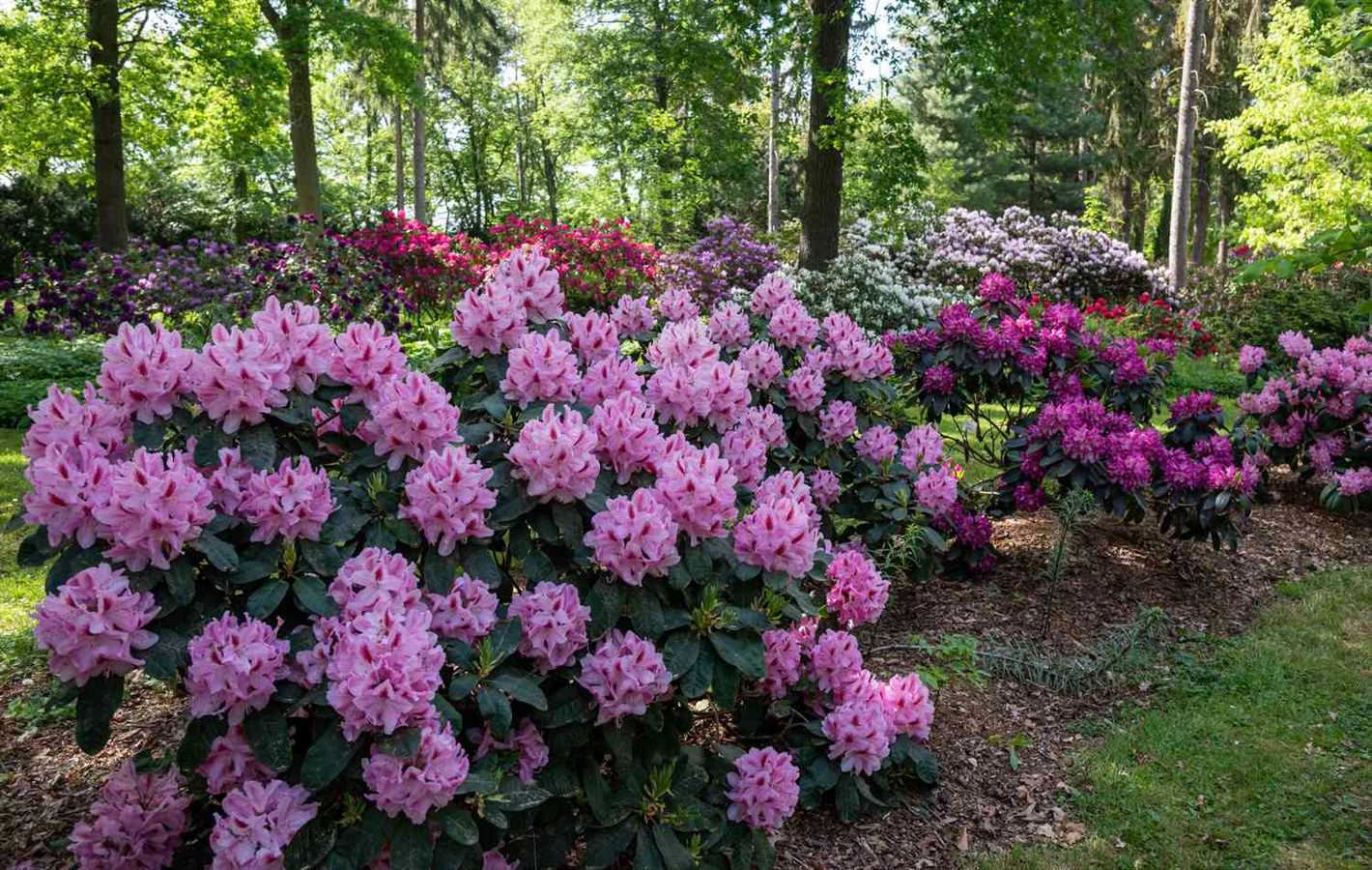
Rhododendrons are beautiful flowering plants that can add a touch of elegance and color to any garden. With their vibrant blooms and glossy evergreen foliage, rhododendrons are a popular choice for both professional landscapers and home gardeners. However, cultivating and caring for these stunning plants requires some knowledge and expertise. In this ultimate guide, we will explore everything you need to know about rhododendron cultivation, including planting, care, and the different varieties available.
When it comes to planting rhododendrons, location is key. These plants thrive in well-drained soil that is rich in organic matter. They also prefer partial shade or filtered sunlight, as direct sunlight can scorch their leaves. It is important to choose a planting spot that provides protection from harsh winds and extreme temperatures. Additionally, rhododendrons have shallow root systems, so they need to be planted in a location where they can easily access water and nutrients.
Once planted, rhododendrons require regular care and maintenance to ensure their health and vitality. Adequate watering is essential, especially during dry periods. It is important to water deeply and consistently, but be careful not to overwater as rhododendrons do not tolerate soggy soil. Fertilizing is also necessary, and it is recommended to use a slow-release rhododendron-specific fertilizer. Pruning is another important aspect of rhododendron care, as it helps shape the plant and promote healthy growth.
Rhododendrons come in a wide array of varieties, each with its own unique characteristics and requirements. Some popular varieties include the Catawba Rhododendron, which features large showy blooms in shades of pink, purple, and white, and the Yakushimanum Rhododendron, known for its compact growth habit and stunning pink flowers. With so many options to choose from, you are sure to find a rhododendron variety that suits your personal taste and garden aesthetic.
Rhododendron Cultivation
Introduction
Rhododendrons are beautiful flowering shrubs that are highly valued for their vibrant blooms. They are native to many parts of the world, including Asia, North America, and Europe. Rhododendrons come in a variety of colors, including shades of pink, purple, red, white, and yellow. They are a popular choice for gardens due to their stunning display of flowers and their ability to attract pollinators.
Planting
When it comes to planting rhododendrons, it’s important to choose the right location. Rhododendrons prefer acidic soil with a pH level between 4.5 and 6.0. They also thrive in well-draining soil that is rich in organic matter. It’s best to plant rhododendrons in a location that receives partial shade, as they can be sensitive to direct sunlight. Before planting, ensure that the soil is well-prepared by adding compost or peat moss to improve drainage and acidity.
Care
Rhododendrons require regular care to ensure healthy growth and abundant blooms. Here are some key care tips:
- Watering: Rhododendrons have shallow roots, so they require regular watering. During dry periods, it’s important to water deeply to encourage deep root growth.
- Fertilizing: Rhododendrons benefit from regular fertilizing with a slow-release, acid-forming fertilizer. Avoid over-fertilizing, as it can cause root burn.
- Pruning: Prune rhododendrons after they have finished blooming to maintain a compact shape and encourage new growth. Remove any dead or damaged branches.
- Pest and Disease Control: Rhododendrons are susceptible to various pests and diseases such as aphids, scale insects, and powdery mildew. Regularly inspect your plants and take appropriate measures to control any issues.
Varieties
There is a wide variety of rhododendron cultivars available, each with its own unique characteristics. Some popular varieties include:
- Rhododendron ‘PJM’: This compact variety has rich pink to lavender flowers and is known for its cold-hardiness.
- Rhododendron ‘Yakushimanum’: This dwarf variety has small, round leaves and produces clusters of pink or white flowers.
- Rhododendron ‘President Roosevelt’: This tall variety has large, ruffled flowers in various shades of pink, red, and purple.
- Rhododendron ‘Nova Zembla’: This vigorous variety has bright red flowers and is highly resistant to cold temperatures.
Conclusion
By following proper cultivation techniques and providing the necessary care, you can enjoy the beauty and elegance of rhododendrons in your garden. Remember to choose the right planting location, provide adequate watering and fertilizing, prune as needed, and be vigilant about pest and disease control. With the wide variety of cultivars available, you can select rhododendrons that suit your preferences and create a beautiful display of color in your landscape.
Planting Rhododendron
When planting a rhododendron, it’s important to choose the right location and prepare the soil properly. Follow these steps to ensure the successful planting of your rhododendron:
1. Choose the Right Location
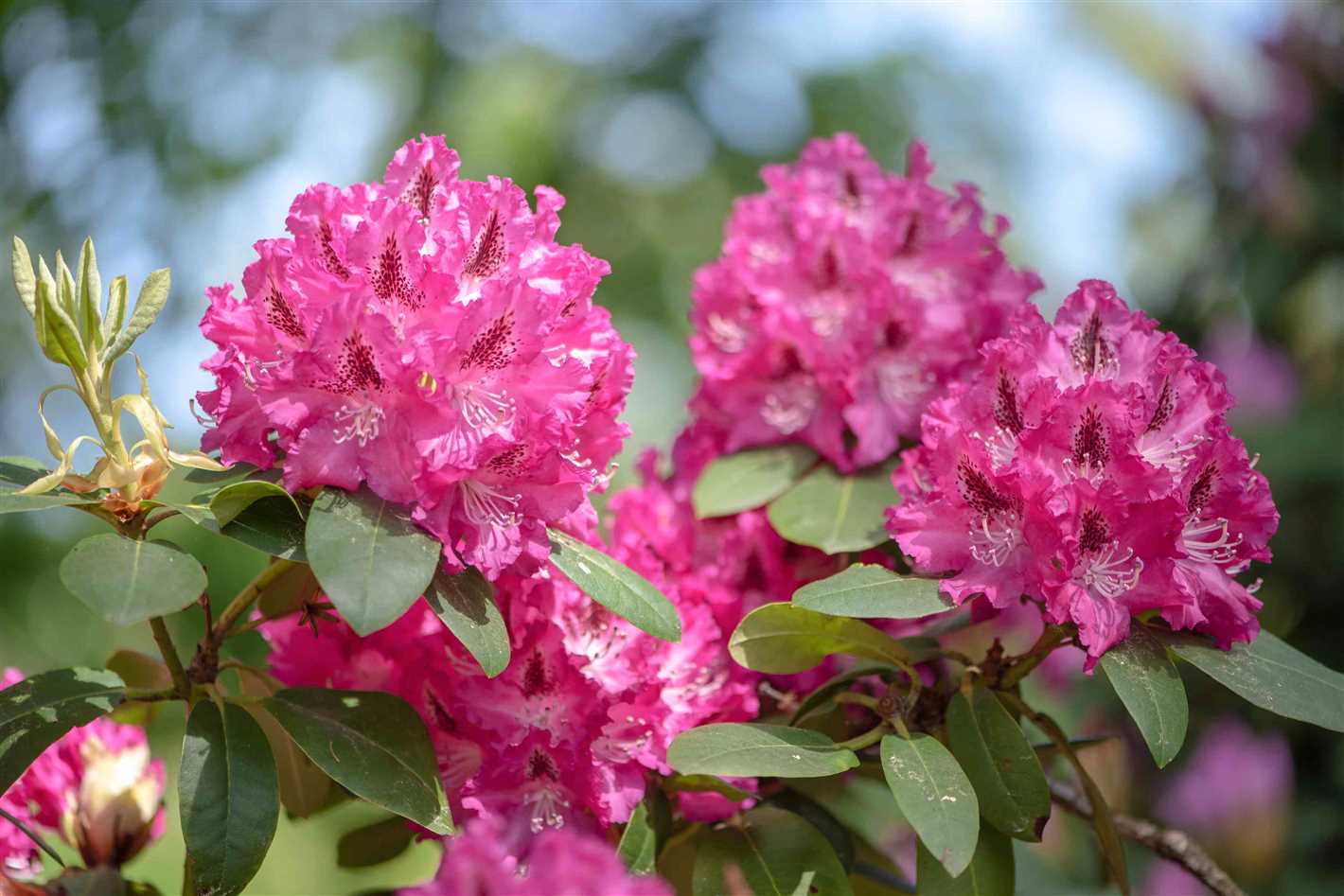

Rhododendrons thrive in partial shade, so it’s important to choose a location that gets morning sun and afternoon shade. Avoid planting them in full sun or deep shade. Additionally, make sure the location has good drainage to prevent root rot.
2. Prepare the Soil
Rhododendrons prefer acidic soil with a pH level between 4.5 and 6.0. Test your soil’s pH level and amend it if necessary. You can lower the pH by adding peat moss or elemental sulfur to the soil. Also, make sure the soil is well-draining by adding organic matter such as compost or leaf mold.
3. Dig the Hole
Dig a hole that is twice the width and slightly deeper than the root ball of the rhododendron. Make sure the hole is deep enough to accommodate the entire root system without crowding it.
4. Plant the Rhododendron
Place the rhododendron in the hole, making sure it is standing straight. Backfill the hole with the amended soil, firming it gently around the roots. Leave a slight depression around the base of the plant to collect water.
5. Mulch the Plant
Apply a layer of organic mulch around the base of the rhododendron to suppress weeds, conserve moisture, and regulate soil temperature. Make sure to keep the mulch a few inches away from the stem to prevent rot.
6. Water the Rhododendron
After planting, water the rhododendron thoroughly to settle the soil and remove any air pockets around the roots. Keep the soil consistently moist, but not waterlogged, throughout the growing season. Water deeply when necessary.
Remember to follow these planting guidelines, and your rhododendron will have a strong start in its new location.
Rhododendron Care Tips
Growing and caring for rhododendrons requires some knowledge and attention to detail. Here are a few tips to help you successfully care for your rhododendron plants:
- Choose the right location: Rhododendrons thrive in well-drained soil and prefer areas with partial shade. Too much direct sunlight can burn the leaves, while too much shade can result in poor flowering.
- Prepare the soil: Before planting your rhododendron, prepare the soil by adding organic matter such as compost or peat moss. This will help improve drainage and provide essential nutrients for the plant.
- Water properly: Rhododendrons have shallow root systems, so it’s important to water them regularly, especially during dry periods. Avoid over-watering, as this can lead to root rot. A layer of mulch around the plants can help retain moisture and regulate soil temperature.
- Fertilize regularly: Rhododendrons benefit from regular feeding, especially during the growing season. Use a slow-release fertilizer specifically formulated for acid-loving plants. Follow the package instructions for proper application.
- Prune as needed: Pruning is important to maintain the shape and health of your rhododendron plants. Be sure to remove any dead or damaged branches and cut back any overgrown or crossing branches. Pruning is best done after the plant has finished flowering.
- Protect from pests and diseases: Rhododendrons can be susceptible to certain pests and diseases, such as aphids, leaf spot, and root rot. Regular inspection of the plants will help you identify and address any issues promptly. Use appropriate pesticides or fungicides if necessary.
- Winter protection: In colder climates, rhododendrons may need some winter protection. Apply a layer of mulch around the plants to help insulate the roots and protect them from freezing temperatures. Avoid piling mulch directly against the stem.
Following these care tips will help you keep your rhododendron plants healthy and blooming for years to come. Remember to pay attention to the specific needs of the rhododendron variety you are growing and make adjustments accordingly.
Popular Rhododendron Varieties
Rhododendrons are a popular choice among gardeners due to their vibrant flowers, attractive foliage, and ability to thrive in various climates. There are numerous rhododendron varieties available, each with its own unique characteristics and growing requirements. Here are some of the most popular rhododendron varieties:
1. ‘Nova Zembla’
‘Nova Zembla’ is a popular evergreen rhododendron variety known for its large trusses of bright red flowers. This variety is ideal for creating a vibrant focal point in your garden and can tolerate cold temperatures better than many other rhododendron varieties.
2. ‘P.J.M.’
The ‘P.J.M.’ variety is a reliable option for gardeners looking for a smaller, compact rhododendron. It produces abundant lavender-pink flowers in early spring and has attractive dark green foliage throughout the year. ‘P.J.M.’ rhododendrons are known for their cold hardiness and can tolerate a wide range of soil conditions.
3. ‘Purple Splendour’
‘Purple Splendour’ is a stunning deciduous rhododendron variety with deep purple flowers that bloom in late spring. This variety is known for its exceptional fragrance and is a favorite among gardeners who want to create a visually striking and fragrant garden.
4. ‘Roseum Elegans’
‘Roseum Elegans’ is a classic rhododendron variety that has been popular among gardeners for decades. It produces large trusses of rose-pink flowers in mid-spring and has glossy dark green leaves. This variety is versatile and can be grown in various soil types, making it suitable for many garden settings.
5. ‘Cunningham’s White’
‘Cunningham’s White’ is a beautiful white-flowering rhododendron variety that adds a touch of elegance to any garden. It produces clusters of white flowers with a yellow flare in mid-spring and has attractive glossy dark green leaves. This variety prefers acidic, well-drained soil and partial shade.
These are just a few examples of the many rhododendron varieties available. Whether you prefer vibrant colors, striking fragrances, or compact growth habits, there is a rhododendron variety to suit your garden’s needs. Be sure to research the specific requirements of each variety before planting to ensure their success in your garden.
Choosing the Right Rhododendron
When it comes to choosing the right rhododendron for your garden, there are several factors to consider. From the size of your garden to the climate in your area, selecting the perfect rhododendron can make a big difference in the success of your cultivation.
Size of the Rhododendron
Rhododendrons come in a variety of sizes, from compact shrubs to towering trees. It’s important to choose a rhododendron that fits well in your garden space. Consider both the height and width of the mature plant, and make sure it has enough room to grow and thrive.
Climatic Conditions
Rhododendrons have different climatic preferences, so it’s important to choose a variety that is suitable for your area. Some rhododendrons are more cold-hardy, while others prefer warmer temperatures. Consider the average low and high temperatures in your region and choose a rhododendron that can withstand those conditions.
Flower Color and Shape
One of the main attractions of rhododendrons is their stunning flowers. They come in a wide range of colors, including shades of pink, purple, red, orange, yellow, and white. Consider the color scheme and overall aesthetics of your garden when choosing a rhododendron. Additionally, pay attention to the shape and size of the flowers, as different varieties can have different bloom forms.
Leaf Characteristics
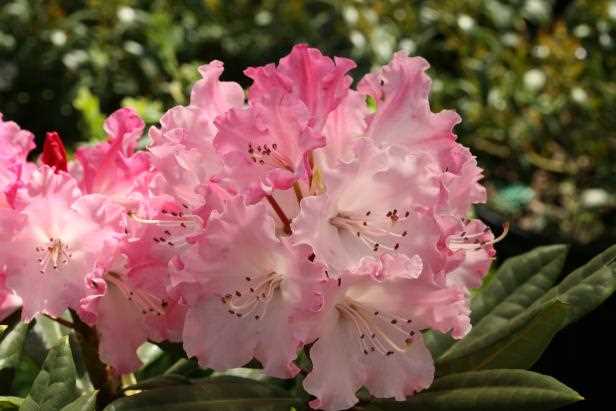

In addition to their beautiful flowers, rhododendrons also have attractive leaves. Some have large, glossy leaves, while others have smaller, more textured foliage. Consider the shape, color, and texture of the leaves when choosing a rhododendron to ensure it complements the overall look of your garden.
Planting Conditions
Lastly, consider the planting conditions in your garden. Rhododendrons prefer well-draining soil that is rich in organic matter. They also thrive in areas with dappled shade and protection from strong winds. Make sure you have the right conditions to support the growth and health of your chosen rhododendron variety.
By considering these factors and doing some research, you can choose the right rhododendron for your garden. Whether you’re looking for a compact shrub or a colorful tree, there’s a rhododendron variety out there that will thrive in your garden and bring beauty to your outdoor space.
Best Conditions for Rhododendron Growth
Rhododendrons are beautiful flowering plants that require specific conditions to thrive. By providing the right environment for your rhododendron, you can ensure healthy growth and vibrant blooms. Here are some of the best conditions to consider:
- Light: Rhododendrons prefer dappled or filtered sunlight. Direct sunlight can scorch their leaves, so it’s best to provide them with shade during the hottest part of the day.
- Soil: Rhododendrons require acidic soil with a pH ranging from 4.5 to 6.0. The soil should be well-draining to prevent waterlogged roots, which can lead to root rot.
- Moisture: While rhododendrons prefer moist soil, they do not tolerate standing water. Make sure to water them regularly to keep the soil consistently moist but never waterlogged.
- Temperature: Rhododendrons thrive in cool to mild temperatures. They can withstand winter frost, but extremely cold temperatures can damage their flower buds.
- Humidity: Rhododendrons prefer high humidity levels. If you live in a dry climate, you may need to increase humidity around your plants by misting them with water.
- Wind Protection: Strong winds can damage the delicate foliage and flowers of rhododendrons. Plant them in a sheltered spot or provide windbreaks, such as fences or other plants, to protect them.
- Fertilizer: Rhododendrons benefit from regular fertilization, especially with a slow-release acidic fertilizer. Follow the instructions on the fertilizer package for the correct dosage and timing.
- Pruning: Pruning is important for rhododendrons to maintain their shape and encourage new growth. Remove dead or damaged branches and prune after the flowering period to avoid removing next year’s flower buds.
By creating the best conditions for your rhododendron, you can enjoy their stunning beauty and create a thriving garden filled with these gorgeous flowering plants.
Rhododendron Pest and Disease Control
Common Pests
Rhododendrons are susceptible to various pests that can damage the plants and affect their overall health. Here are some common pests to watch out for:
- Aphids: These small insects feed on the sap of rhododendron leaves, causing them to curl and distort. Aphids can also transmit diseases to the plant.
- Caterpillars: Various species of caterpillars can chew on rhododendron foliage, causing unsightly holes and damage to the plant.
- Spider mites: These tiny arachnids can infest rhododendron leaves, causing them to turn yellow, dry out, and fall off.
- Scale insects: Scale insects are small, immobile pests that attach themselves to the leaves and stems of rhododendron plants, sucking sap and potentially causing dieback.
- Root weevils: These pests lay their eggs in the soil near rhododendron plants. The larvae then feed on the plant’s roots, leading to stunted growth and eventual decline.
Preventing and Controlling Pests
Proper care and maintenance can help prevent pest infestations on rhododendron plants. Here are some tips to keep your plants healthy:
- Inspect regularly: Regularly check your rhododendron plants for signs of pests. Look under leaves, on stems, and in the soil.
- Prune affected areas: If you spot any signs of pest infestation, promptly prune and dispose of the affected parts of the plant.
- Encourage natural predators: Some insects, like ladybugs and lacewings, naturally feed on common rhododendron pests. Planting flowers that attract these beneficial insects can help keep pests under control.
- Use insecticidal soap: If pest populations become too high, consider using insecticidal soap to control them. Follow the instructions on the product label carefully.
- Maintain good hygiene: Remove fallen leaves and plant debris from the area around your rhododendron plants to eliminate hiding places for pests.
Common Diseases
Rhododendrons are also prone to several diseases, which can weaken and even kill the plants if left untreated. Some common diseases include:
- Phytophthora root rot: This soil-borne disease affects the roots of rhododendrons, causing them to rot and ultimately leading to plant death.
- Powdery mildew: Powdery mildew is a fungal disease that appears as a white, powdery coating on the leaves and stems of rhododendrons.
- Brown leaf spot: Brown leaf spot is a fungal disease that causes brown spots to appear on the leaves of rhododendrons, leading to leaf drop and defoliation.
- Bud blast: Bud blast is a fungal disease characterized by the sudden death of flower buds before they open.
- Leaf gall: Leaf gall is a bacterial disease that causes abnormal growths or galls on the leaves of rhododendron plants.
Preventing and Managing Diseases
To prevent and manage diseases on rhododendron plants, follow these practices:
- Plant in well-draining soil: Rhododendrons prefer moist but well-draining soil to prevent root diseases like root rot.
- Water properly: Avoid overwatering or allowing the soil to become waterlogged, as this can promote the growth of fungal diseases.
- Prune affected areas: If you notice any signs of disease, promptly prune and dispose of the affected plant parts to prevent the spread of the disease.
- Apply fungicides: If necessary, apply fungicides specifically formulated for rhododendrons to help control fungal diseases. Follow the product instructions carefully.
- Maintain good airflow: Provide adequate spacing between rhododendron plants to promote good air circulation, which can help prevent fungal diseases.
By following these pest and disease control measures, you can ensure that your rhododendron plants remain healthy and thrive in your garden.
Pruning Rhododendron
Pruning is an important aspect of rhododendron care that helps to maintain the health and shape of the plant. Proper pruning helps to promote new growth, improve airflow within the plant, and remove dead or diseased branches. Here are some tips for pruning your rhododendron:
1. Timing
The best time to prune rhododendrons is right after they flower. This allows the plant to recover and produce new growth before the next blooming season. Pruning in late summer or fall can remove flower buds for the following year.
2. Tools
Use clean, sharp pruning shears or loppers to make precise cuts. Disinfecting the blades with rubbing alcohol between cuts can help prevent the spread of diseases.
3. Removing Dead or Diseased Branches
Start by removing any dead, damaged, or diseased branches. Cut them back to healthy wood, making sure to cut just above a bud or branch junction.
4. Shaping
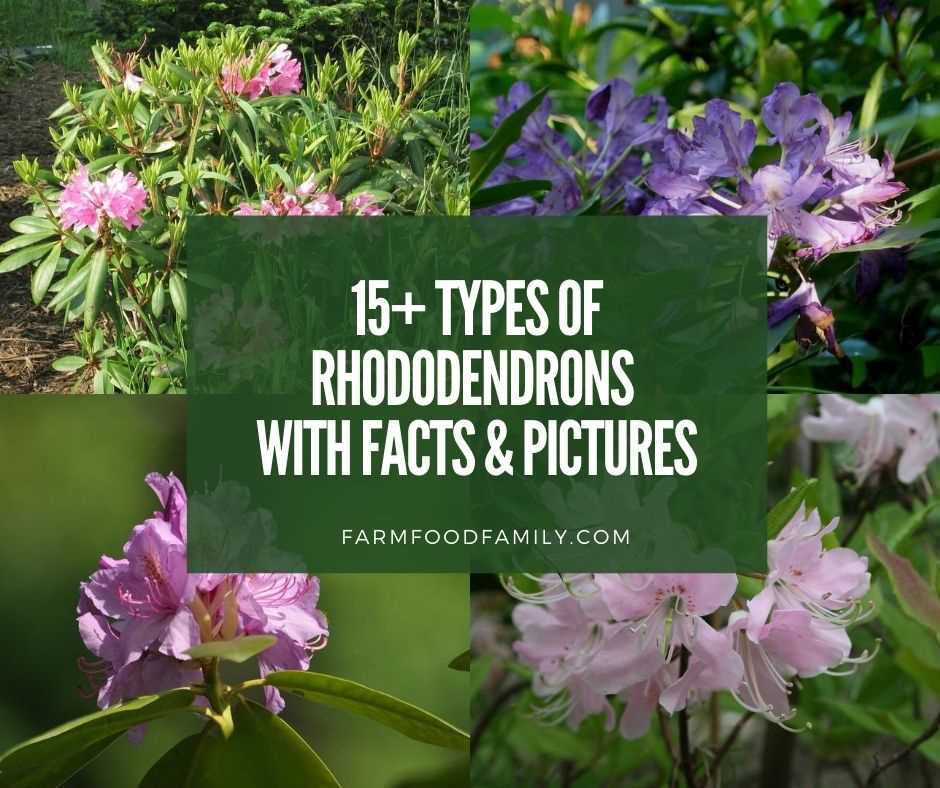

Rhododendrons can be pruned to maintain a desired shape or size. To shape the plant, selectively remove branches that are growing in the wrong direction or crossing each other. Aim for an open and balanced form.
5. Thinning
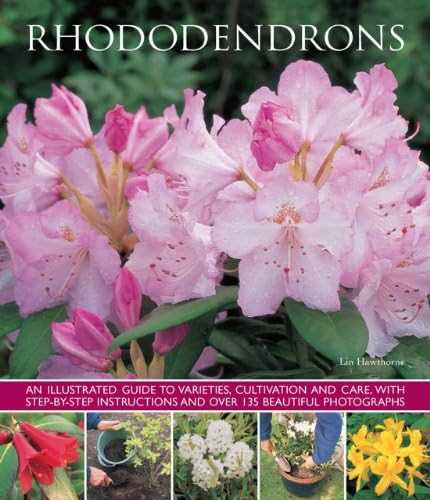

Thinning the rhododendron by selectively removing some of the older branches can improve airflow and light penetration into the plant. This promotes better overall growth and flowering.
6. Renovation Pruning
If your rhododendron has become overgrown or misshapen, renovation pruning can help rejuvenate the plant. This involves cutting the entire shrub back to about 6 inches above the ground. It will regrow from the base and produce new, healthier growth.
7. Avoid Over-Pruning
Avoid pruning too much at once, as this can stress the plant. It is better to make light, selective pruning cuts over time to maintain the health and shape of the rhododendron.
Remember to always assess the specific needs and growth habits of your rhododendron before pruning. Different varieties may require different pruning methods and schedules. When done correctly, pruning can help keep your rhododendron looking its best and ensure its long-term health.
Tips for Successful Rhododendron Cultivation
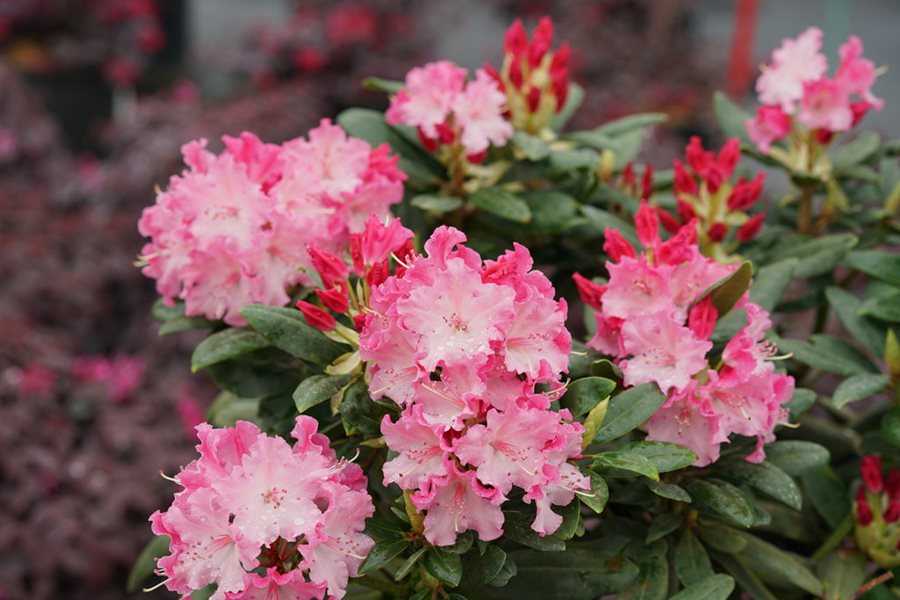

1. Choose the Right Location
When planting rhododendrons, it is important to select a location that provides the right conditions for their growth. Rhododendrons prefer partial shade or filtered light, as direct sunlight can scorch their leaves. Additionally, they thrive in well-drained, slightly acidic soil with a pH level between 4.5 and 6. If your soil doesn’t meet these requirements, consider planting in containers or amending the soil accordingly.
2. Provide Adequate Watering
Rhododendrons have shallow root systems and require regular watering to establish and maintain their growth. It is crucial to keep the soil consistently moist, especially during dry periods. However, be cautious not to overwater, as this can lead to root rot. Mulching around the base of the plants can help conserve moisture and regulate soil temperature.
3. Fertilize Regularly
To promote healthy growth and vibrant blooms, rhododendrons benefit from regular fertilization. Use a slow-release fertilizer specifically formulated for acid-loving plants, and apply it in early spring or late fall. Be cautious not to over-fertilize, as it can lead to excessive foliage growth at the expense of flower production.
4. Prune and Shape as Needed
Rhododendrons generally do not require much pruning, except to remove dead or damaged branches. If necessary, prune after blooming to shape the plants and improve their overall appearance. Avoid heavy pruning, as it may reduce the following year’s bloom.
5. Protect from Harsh Winter Winds
Winter winds can be harsh on rhododendrons, causing desiccation and damage to the foliage. Consider planting them in protected areas or creating windbreaks to shield them from strong winds. Applying a layer of mulch around the base of the plants can also help insulate the roots and protect them from freezing temperatures.
6. Watch for Common Pests and Diseases
Rhododendrons are susceptible to pests such as aphids, scale insects, and leafhoppers. Regularly inspect the plants for signs of infestation and treat them accordingly. They are also prone to diseases like powdery mildew, bud blast, and root rot. Proper sanitation practices, such as removing fallen leaves and providing adequate spacing between plants, can help reduce the risk of infections.
7. Select Varieties for Your Climate
When choosing rhododendron varieties for your garden, consider their hardiness and adaptability to your climate. Different varieties have different temperature and soil requirements, so select ones that are well-suited to your region. Consulting with local nurseries or gardening experts can provide valuable insights into the best varieties for your specific location.
8. Stay Vigilant and Observant
Rhododendrons require regular care and attention to thrive. Keep an eye out for any changes or abnormalities in the plants’ appearance, such as wilting leaves, discoloration, or stunted growth. Early detection of issues can help prevent further damage and ensure the long-term health of your rhododendrons.
By following these tips, you can cultivate healthy and beautiful rhododendrons in your garden. Remember to be patient, as rhododendrons can take a few years to become fully established and reach their full potential.
Questions and Answers:
What are the varieties of rhododendron plants?
The varieties of rhododendron plants include Azaleas, Catawba rhododendron, P.J.M rhododendron, Holland rhododendron, and many more.
When is the best time to plant rhododendrons?
The best time to plant rhododendrons is in the spring or fall.
How do I care for rhododendron plants?
To care for rhododendron plants, you should provide them with well-drained soil, regular watering, and occasional pruning.
What are the ideal growing conditions for rhododendrons?
Ideal growing conditions for rhododendrons include acidic soil with a pH range of 5.0-5.5, partial shade, and protection from strong winds.
Can rhododendrons be grown in pots?
Yes, rhododendrons can be grown in pots, but they require special care such as regular watering and fertilization.
How often should I water my rhododendron plants?
Rhododendron plants should be watered thoroughly once a week, or more often during dry periods.
Why are the leaves of my rhododendron turning yellow?
The leaves of a rhododendron can turn yellow due to overwatering, poor drainage, nutrient deficiencies, or pest infestation.







